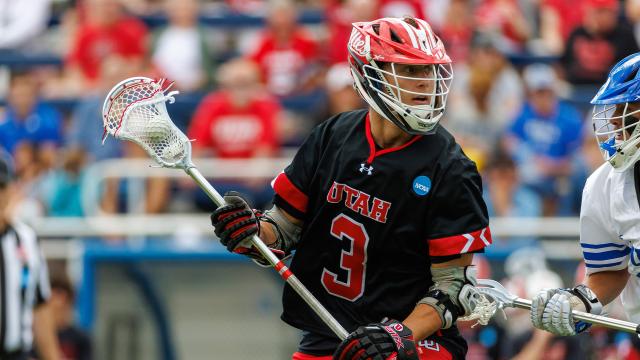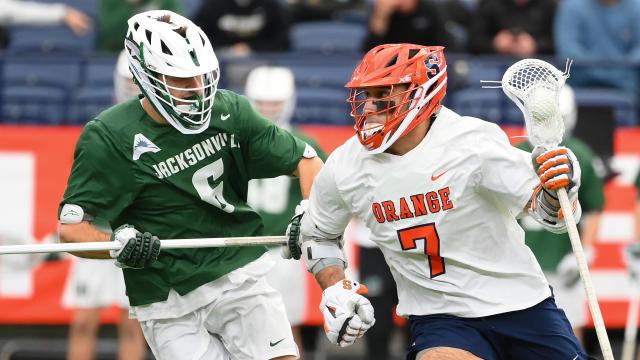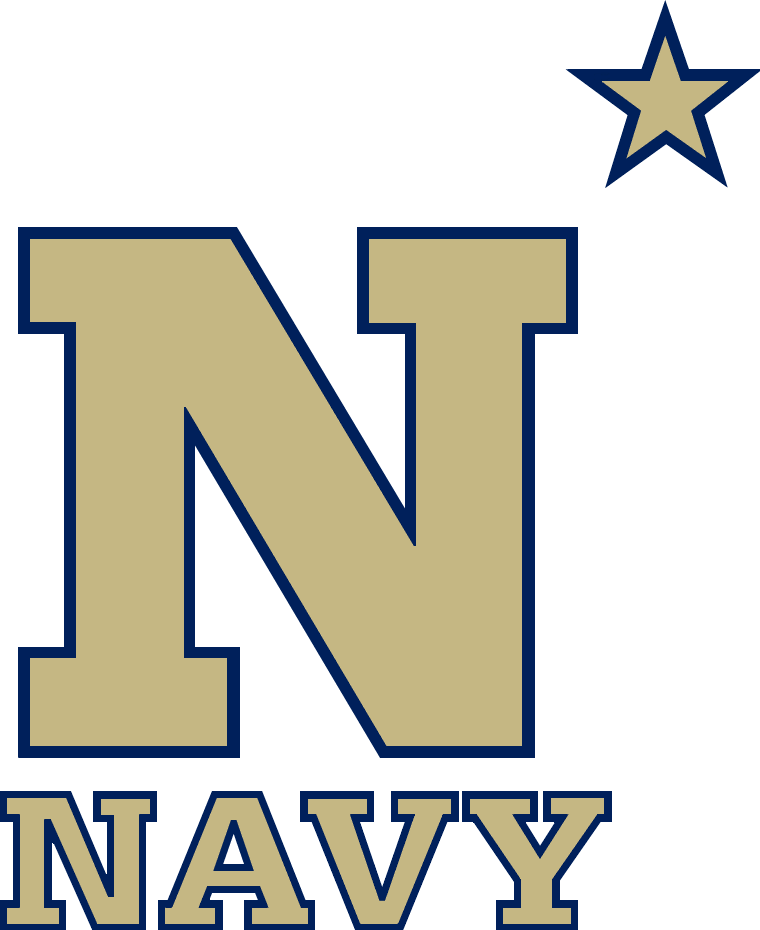
Life After Lacrosse: Thomas Zimmerman, Blue Angels Pilot
This article appears in the March edition of USA Lacrosse Magazine. Join our momentum.
Thomas Zimmerman wanted to fly fighter jets ever since he watched the original “Top Gun” with his father. It wasn’t until his time at St. Paul’s (Md.) that he found a path to his dream.
Zimmerman was recruited to play lacrosse at Navy. A 6-foot-1, 220-pound defenseman, he spent four seasons (2005-09) with the Midshipmen and trained to become a naval aviator.
A graduate of Top Gun himself, Zimmerman is now a member of the Blue Angels, the world-renowned U.S. Navy Flight Demonstration Squadron. He reflected on his career thus far, and how lacrosse prepared him for life on the fly.
WHY LACROSSE?
I always loved the power, finesse, tempo and strategy of the game. I enjoyed the team aspect and as a kid, I found it pretty entertaining that I was encouraged to hit other kids with a stick. As I matured, both mentally and physically, I enjoyed the athletic challenge of using my size and agility to shut down attackers. The strength and conditioning, the mental toughness, and the intellectual [element] made lacrosse the full package.
HOW WERE YOU RECRUITED?
I went to a few recruiting camps — Top 205 and Blue Chip — and [then-Navy assistant] Coach [John] Tillman was my coach at camp. Afterward, he approached me my junior year at St. Paul’s and said, “Hey we’re interested in having you play for the Naval Academy.” He talked about all of the job and career options after graduation. I was like, “I can fly airplanes off an aircraft carrier. That’s pretty cool.” That got me interested, and lacrosse bridged the gap.
WHAT’S UNIQUE ABOUT NAVY LACROSSE?
Simply put — the brotherhood. How tight-knit the team was, how much we had each other’s backs and the trust placed in one another. After suffering a knee injury in 2005, I can’t imagine returning to the level of competitiveness that I did with any other group of guys.
WHAT WAS YOUR VISION FOR YOUR CAREER?
After reporting to the U.S. Navy flight school, my vision for my career was first to fly F/A-18s and continuing to fly as long as I could while improving my skills each flight hour in the jet. Looking back as a 6-year-old watching “Top Gun” with my dad and the Blue Angels perform in Annapolis, I never imagined I would achieve both childhood dreams.
HOW DOES LACROSSE RELATE TO AVIATION?
Building a foundation of trust, fostering the growth of teamwork and relentlessly pursuing excellence are important aspects of both worlds.
One of the many ways our Blue Angels team is able to work on all three aspects is to be accountable. Similar to the lacrosse field where you would take accountability for a missed slide, a poor shot choice or a wild pass, flying as part of this demonstration team we take accountability for every mistake.
Another similarity is the preparation. On the Blue Angels we come prepared each day to critique prior flight footage to determine what to work on that day. In a fleet squadron (a deployable Navy group), we discuss and analyze the enemy tendencies and techniques to better prepare our plan of attack, not unlike scouting lacrosse opponents.
HOW REALISTIC IS “TOP GUN: MAVERICK?”
They did a nice job with the movie. By putting the actors in the jet, you could see the g-forces, the toll that takes on your body, and how truly tiring that experience is. The movie is Hollywood-exciting due large in part to the cockpit footage of the “rewards” that are a result of the hard work put in leading up to that point — similar to watching a lacrosse game versus attending a lacrosse practice. While the tactics used may not be realistic and up to date, the communications, flying and g-forces experienced by the actors were extremely accurate.
HOW WERE YOU SELECTED TO THE BLUES?
First and foremost, there is a checklist of qualifications you need to meet in order to be eligible to apply to the team. There’s a paper application and rushing process where you attend air shows to meet the current team.
From there, the team selects a group of finalists who are invited to Pensacola, Florida — the home of the Blue Angels — for a week of intensive interviews and testing. At the completion of that week, the current team selects the new teammates for the upcoming year.
I was fortunate enough to be chosen among my peers for one of the two available F/A-18 demonstration pilot spots.
WHAT IS YOUR EXPERIENCE LIKE NOW?
As Blue Angel No. 7, I am the narrator and orientation flight lead. I will narrate each public flight demonstration, act as an advanced liaison officer for the squadron at each show site and conduct guest-rider flights. We are currently executing our winter training in El Centro, California, where we spend three months perfecting the flight demonstration.
Life in the Blue Angels is extremely busy. This year, we will be gone 250 to 300 days performing 65 flight demonstrations beginning March 11 and running through early November, all while visiting 32 cities throughout the United States and Canada.
HAVE YOU REFLECTED ON YOUR JOURNEY?
As any journey goes, it has not been without its successes and failures, nor have I achieved my success on my own. Throughout my life, I have been fortunate to have great mentors, including coaches, teachers, family and friends. While I will likely never play competitive lacrosse again (and most likely only pick up a stick to play catch in the backyard with my two boys), I am forever grateful for the sport, the lessons I have learned and all of the people I have met because of it — including my wife, Emily, who has been supportive of me throughout my career.
Matt Hamilton
Matt Hamilton is the Content Marketing Manager at USA Lacrosse, having served as a staff writer for four years. He's a Baltimore native who loves the Orioles and Ravens, even if they let him down in the last year. He likes chicken tenders and Shirley Temples and sick views. He also loves writing about lacrosse.

Related Articles




